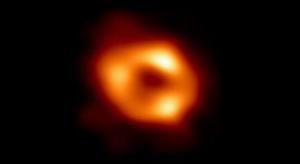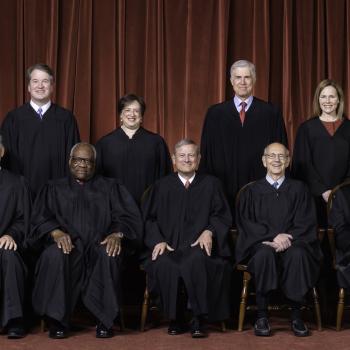The first image of the supermassive black hole in our Milky Way Galaxy was shown by astronomers today at 9:07 AM ET in a series of special events in seven cities around the globe. Here in the U.S., it was shown at a meeting of the National Press Club in Washington, D.C. The image was captured many months ago by a consortium of powerful, space-observation telescopes located around the Earth, called the Event Horizon Telescope.
The expression “event horizon” refers to the space near the “mouth,” so to speak, of a black hole. This project involved 300 scientists, 80 institutions, and 8 telescopes. One of the telescopes, which are actually radio dishes, is located at the South Pole. It took astronomers years to collect and analyze the data from these observation stations. They say that using a series of telescopes together, like they are doing, would enable them to capture the image of a ping pong ball on the moon. Well, our NASA astronauts played golf on the moon; maybe ping pong is next.
Scientists believe that all of the billions of galaxies in our universe have at least one supermassive black hole, usually located at the center of each galaxy. Galaxies have many black holes, but only one that is supermassive. The larger black holes are in the business of eating each other up or merely merging. That is how a single black hole becomes so much larger than others, thus being called “supermassive.” This one in our Milky Way Galaxy is average in size. Its mass is about the size of 4 million of our suns, and it is 27,000 light years away from Earth.
A black hole has been something that, in the past, scientists merely theorized about. They had much evidence to prove that black holes exist. Most of it has been the physical effects that black holes have on surrounding matter. However, scientists had never seen a black hole because black holes really can’t be seen by human eyes. That’s because black holes gobble up stars and such with such intense density of gravity that the light from those objects cannot be seen once it enters past the event horizon of black holes. And when an object enters past that event horizon, it’s sayonara baby, farewell forever. You’re never getting out and likely will never exist as before.
However, scientists claim that black holes usually have a ring of light around their opening our mouth. In the case of this image, it shows such a ring of light, with three large light spots in it. But the interior of the ring is solid black, which is why the black hole gets its name. This image further assures that Albert Einstein’s theory of general relativity remains safe and sound in its affirmation that gravity bends space and time.
Actually, this image is not the first ever produced of a supermassive black hole. The first was three years ago, and it was taken of a black hole in another galaxy, called Messier 87 Galaxy. The reason they got that image first, rather than this image of the black hole in our own galaxy, is that the supermassive black hole in Messier 87 Galaxy is a thousand times larger than our, thus easier to observe through telescopes.
It took astronomers months to process the visual evidence produced by the Event Horizon Telescope in order to achieve this image. Of course, the image is a still shot. In reality, black holes are not static, rather they “gurgle,” like some monster eating food.
Scientists were surprised at two things about their findings regarding our galaxy’s supermassive black hole: (1) it is quite calm in its gurgling compared to supermassive black holes of other galaxies, and (2) the mouth, or opening, of our galaxy’s supermassive black hole is aimed right at the Earth. I wonder if that has any significant meaning. I believe Earth is special and that that is why the Bible begins, “In the beginning God created the heavens and the earth.” I may have more on this later.














